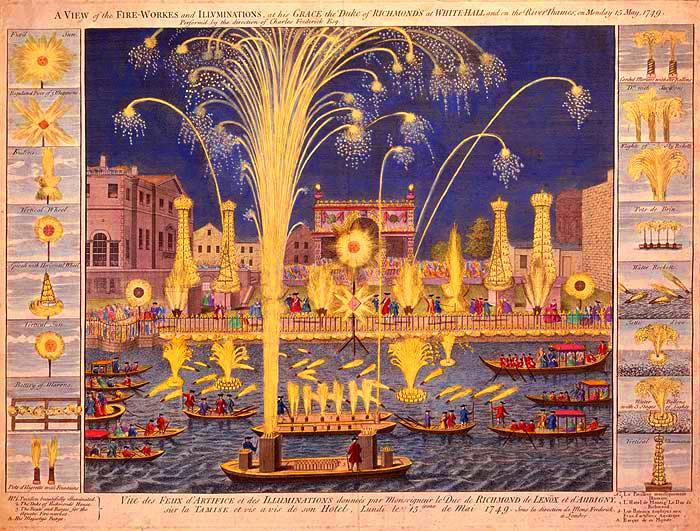Crash! Boom! Oh Jesus, run! Ah, the sounds of a fine fireworks display! (The latter interjection is ideally only heard at the amateur pyrotechnics level, for the record.) Fireworks play an integral role in all sorts of celebrations around the globe, from America’s Independence Day to India’s Diwali festival to Japan’s hundreds of annual summertime fireworks displays to each and every night of the year near a Disney theme park.
Related:
Fireworks are common in the modern era, but they’re hardly a modern invention. No, in fact the history of fireworks stretches back more than 64 million years! No, wait… that’s dinosaurs. The history of the firework reaches back about 1,200 years.
When were fireworks created?
The consensus among historians is that black powder (also known as, but not entirely accurately known as, gunpowder) was created quite by accident. One or more alchemists working to create a substance intended to imbue immortality created a powder that would instead lead to the exact opposite of eternal life, as evidenced by the Napoleonic Wars, WWI, and, let’s say, modern Syria. While the blend of potassium nitrate, charcoal, and sulfur that 9th Century Chinese alchemists devised has led to untold millions of deaths and zero known cases of immortality, it also paved the way for the development of fireworks, which would dazzle, charm, and occasionally terrify people for centuries to come.

The earliest Chinese fireworks consisted primarily of basic firecrackers and simple rockets; these were devised by packing black powder into a bamboo tube and sealing both ends or by packing a tube of bamboo and leaving one end open, respectively. Sometimes early fireworks were simply tossed into a fire, at other times they were lit with a fuse. Regardless of the type of incendiary and the method of its combustion, the result was usually the same: a big, loud bang that was orangey-yellow in color.
Black powder made its way to Europe along the ever-busier trade routes of the 12th and 13th Centuries. Some historians claim Marco Polo brought the technology west, while others credit Arab traders. While initially this new explosive elixir was used primarily for martial purposes (cannons and muskets, e.g), soon enough Europeans were enjoying fireworks for recreational purposes as well. We have specific accounts of awe-inspiring pyrotechnic displays at the late 15th Century wedding of Henry VIII, for example, and by the 1600s a man could make a living as a “firemaster” in charge of fireworks displays designed for major celebrations.
Fireworks being used for celebrations
Fireworks became forever entwined with the celebration of America’s Independence Day right from day one, as it were. The first 4th of July celebration that mattered as far as an American is concerned was 7/4/1777, the date exactly one year after the Declaration of Independence was signed. (Or at least the day we observe as such — the signatory process actually took a few days.) The fireworks of that first Independence Day were safer and more impressive than the early explosives seen in China those many hundreds of years ago, but they were still limited to orange and yellow flames and sparks.

Fireworks with color were developed in the early years of the 19th Century and were made widely available in the 1830s. That’s thanks to the many scientific advances that accompanied the Industrial Revolution. Italian scientists are credited as being the first to add other elements and blends of materials to the incendiary powder used in fireworks, the results being new dazzling colors and crackling displays. Substances such as aluminum, magnesium, barium, and more could create everything from blue to red to green flames and sparks.
Modern professional firework displays have grown ever larger and more impressive even as firework sales and use have become ever more restricted, at least in America. (Home of the free indeed, right? Right.) The current record for the largest firework display of all time was set in the Norwegian town of Søgne in late 2014. During an hour and a half long display, more than half a million individual fireworks were detonated, launched, or blasted out showers of sparks.
Boom.



